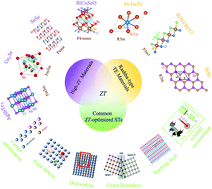Novel optimization perspectives for thermoelectric properties based on Rashba spin splitting: a mini review
Abstract
The energy problem has recently become increasingly more serious, therefore the rational use of heat energy and conversion into electrical energy is particularly important. The thermoelectric (TE) field is closely related to human life, as heat from automobiles, heat dissipation from high-power electrical appliances, or other electrical products that produce a lot of heat, can all be transformed with TE materials. The search for TE materials with an excellent performance and effective TE optimization strategies (STs) has attracted significant attention owing to the fact that thermal energy can be directly converted into electric energy. In contrast to the common TE-optimized STs, such as constructing point defects or reducing dimensionality, spin-related optimization STs have emerged from previous published research, such as the spin Seebeck effect or the Rashba effect, in which the Rashba effect shows an effective method to break through the bottleneck of ZT optimization. In this review, typical high ZT materials, common traditional optimized STs, Rashba-type TE materials and their corresponding ZT values are comprehensively discussed. The TE performance of Rashba-type materials is analysed, such as BiTeX (X = I, Br), GeTe, BiSbSeTe2, and the BiSb monolayer. Moreover, the TE optimization mechanisms (band engineering, phonon engineering, and Rashba spin-split engineering) are summarised. Finally, the development and challenges of Rashba spin-split combined with TE in breaking the bottleneck in ZT optimization are highlighted.

- This article is part of the themed collections: Recent Review Articles and 2021 Nanoscale HOT Article Collection


 Please wait while we load your content...
Please wait while we load your content...